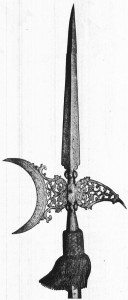In our last lesson, we learned 7 different characters, that also function as radicals – they appear in other characters, to give a clue about their meaning or pronunciation. In this lesson, we are going to study 10 characters, many of which feature the previous radicals we studied. In the process, you’ll also learn a few common words made up of these characters.
Let’s start with the character for “you”, which is:
Can you recognize any of the radicals within this character?
On the left, you can see the radical for 人 (reduced to 亻) which suggests that this character has to do with a person, which is correct since “you” are a person! You might also notice an inner component on the right side, which is made up of the character 小.
It might not be clear how “small” fits in to this character, so you’ll need to use a bit of imagination. Perhaps you can imagine yourself looking down at the small person in front of you. So that only leaves the little bit above 小 that is new in this character.
So even though this is an entirely new character, with several strokes, it’s made up of 3 components, 2 of which we’ve already seen before.
Doesn’t that make it easier to learn?
Try typing 你 yourself below:
The next character we’ll look at, is a character meaning “also”:
This character is made up of completely unique components. Supposedly it’s a picture of a snake, so you’ll need to use your creativity to come up with a relationship between “snake” and “also”. Perhaps you can imagine a snake that likes to take a bite of everything in front of it. So instead of finishing one item at a time, it “also” wants a bite of the next item as well.
Try typing 也 below:
Let’s now combine a couple of components into a new character:
What two components do you notice here?
You should notice the 人 radical as well as the 也 character we just saw above. So that gives us “also person” or “other person”. This is the character for “he”.
Try typing it below:
Now that we know the character for “he”, let’s look at what the character for “she” looks like.
Notice that the only component that is different is the radical on the left. This should be easy to decipher as we know that 女 means “woman” so this gives us the female equivalent of 他.
Notice how 他 and 她 have the same pinyin, so you’ll need to pick the right one when trying to type it.
Try typing 她:
Next on our list is another pronoun:
You may recognize the 手 radical from our last lesson, on the left side. Do you remember what it means?
It means “hand”. So what’s on the right? It’s actually another radical that represents a halberd.
A halberd is a type of spear. Here’s what it looks like:
So you can think of 我 as being a hand, holding a halberd, perhaps defending yourself. And this is the character for “I”.
Try typing it below:
Let’s look at another character now:
This is made up of two radicals that we have both seen before. We know that 女 means “woman”. Do you remember what 子 means?
It means “child”. So what do you suppose a woman and a child together represent?
In Chinese, it represents the character “good”. Try typing it below:
We have two more characters left to look at in this lesson. The first is:
You can see the 口 radical on the left. Do you remember what it means?
It means “mouth”. In this case, it signifies a part of speech (coming out of your mouth), as 嗎 is the interrogative particle used to turn statements into questions.
The right part of the character is actually its own character:
This character means “horse”. Indeed you can imagine it being a horse with no head facing upwards. Each of the four horizontal strokes could be a leg, with the tail whiskers at the bottom.
Now you might be wondering what a horse and a question mark have in common, and why these elements should be in the same character. In this case, they share the same sound element (ma), while the meanings obviously widely differ.
Sometimes, recognizing a radical in a character can give you a clue to either its meaning OR its sound.
Try typing the question particle 嗎 below:
The last new character we’ll look at is:
While the radical on the left side looks like the 人 radical 亻, there is an extra stroke on top which makes it a different radical 彳 meaning “step”.
On the right is another radical 艮. Together these two radicals form the character 很 which means “very”.
Try typing it below:
We’ve now learned enough characters to form some basic words and sentences. You can put 你 and 好 together to wish someone “you good” or “hello”: 你好, meaning “hello”.
Try typing 你好 below:
Adding a 嗎 to a sentence turns it into a question. So adding it to 你好 turns it into “Are you good?”, which is how one asks “How are you?”. Try asking that below:
Similarly, how would you ask “How is she?”
We’ve learned all the characters required to reply to such a question with “I’m great”, which is made up of the characters for “I”,”very”,”good”.
我很好.
Try typing that below:
So a simple conversation could look like this:
A: 你好.
B: 你好.
A: 你好嗎?
B: 我很好.
Practice these characters and words in the flashcard test below, then join us for lesson 4!
Flash Card Exercise